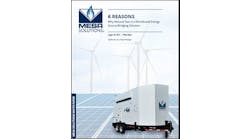By Elisa Wood
Governments remain in power as long as the people have enough food, or so the old adage goes. But in today’s appliance-driven society, political longevity may depend as much on giving us our daily share of electrons.
So it is little surprise that government leaders in Maryland are looking hard for ways to ward off a possible power shortage. Without quick action, the state could face blackouts in three years. Thus, energy efficiency is a big topic of conversation.
Governor Martin O’Malley wants to reduce electric demand 15% by 2015 through efficiency measures, and state lawmakers appear ready to help out.
“If we are concerned about rising electricity rates, the increasing possibility of power brownouts and the growing threat to our climate from power plant emissions, then the solution we must embrace now is energy efficiency,” said Delegate Bill Bronrott at a Feb. 14 news conference in Annapolis with key state policymakers and representatives from the American Council for an Energy-Efficient Economy (ACEEE).
Should this pro-efficiency sentiment hold, Maryland could become fertile territory for energy efficiency businesses. How fertile? An ACEEE report identified 22,000 GWh of potential energy savings, which could produce 12,000 new “green collar” jobs – about as many jobs as the state would gain by building 100 new manufacturing plants. These jobs account for $780 million in wages – enough to create a range of business opportunities for efficiency technologies.
The ACEEE recommends that Maryland enact an energy efficiency portfolio standard – an approach being eyed in many states. The standard would require a 1.8% annual reduction in Maryland’s energy use – not through consumer sacrifice, but through use of high performance technologies: efficient lighting, computers, air conditioners, factory motors and other equipment that needs less energy to achieve the same result as the energy guzzling models.
The program could rescue Maryland from its near bottom ranking (47) for energy efficiency spending among the states. To put that in perspective, Maryland spends $0.01 per capita on energy efficiency, while the top ten states spend about $10 per capita.
ACEEE’s proposal requires an upfront investment, but consumers eventually see substantial savings. For every $1 invested in energy efficiency, electric ratepayers will save $4, according to the report.
If this plan works, the electrons keep flowing, the population remains happy, and a few politicians just might save their jobs.
Elisa Wood is a writer who specializes in energy. Subscribe to her free Energy Efficiency Markets Newsletter by visiting www.realenergywriters.com





